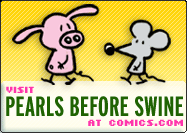Maryann Mott for National Geographic News
September 2, 2008
It's not just the human evacuation that went much smoother this time. Thousands of pets accompanied the estimated two million people who fled inland from the U.S. Gulf Coast this past weekend as Hurricane Gustav hurtled toward the region.
On August 31, Gustav moved into the Gulf of Mexico as a Category 3 hurricane, raising fears of a repeat of the devastation caused three years ago by Hurricane Katrina and prompting evacuation orders for much of the Gulf Coast.
About 160 climate-controlled vehicles operated around the clock in New Orleans to whisk pets and their owners out of harm's way. At least a half dozen emergency shelters throughout the state quickly filled with pets of all shapes and sizes."This is the first time in history that pets have been a priority in an evacuation," said Ana Zorrilla, CEO of the Louisiana Society for the Prevention of Cruelty to Animals (LA-SPCA), based in New Orleans.Now that the danger from Gustav has passed, pets from New Orleans will be sent from a huge shelter at the Shreveport, Louisiana, fairgrounds back into the LA-SPCA facility, where the animals will be housed until owners retrieve them. Meanwhile, a team from the LA-SPCA is heading from Shreveport into New Orleans today to stock up on needed food, supplies, and backup generators, Zorrilla said.
The shelter's stray animals were evacuated last week to Baton Rouge, Louisiana, and Dallas, Texas. Zorrilla hopes to bring back those animals next week and resume normal operations.Meet Me at the FairThe preparations for Gustav stand in sharp contrast to the situation during Hurricane Katrina.In that storm's aftermath, animals hadn't been allowed on buses or rescue boats, forcing some people to choose between staying with their pets and hopping a ride to safety. (See photos of pets affected by Katrina.)
Since then government officials, emergency workers, and animal-welfare groups say they've worked hard to put disaster plans into place to help both people and animals.
In New Orleans—a city with 350,000 residents and at least 200,000 pets—evacuations began early Saturday morning for pet owners who didn't have transportation. Buses picked up New Orleanians at 17 locations around the city and dropped residents off at a processing center near the Louisiana Superdome. There, pet owners were issued wristbands and pet collars that had matching identification numbers. Larger dogs were loaded into crates and placed in refrigerated vehicles. Smaller animals accompanied their owners on the ten-hour bus trip to a shelter at the state fairgrounds in Shreveport, about 230 miles (370 kilometers) northwest of the Big Easy.
"Throughout the evacuation process, I can't tell you how many people said, The only reason that I'm leaving now is because I can take my animal with me and both of us can be safe," Zorrilla said.A steady flow of buses and vehicles loaded with cats, dogs, hamsters, snakes, and rabbits began arriving late Saturday night. The procession didn't stop until early Monday morning, just before a slightly weakened Gustav made landfall about 70 miles (113 kilometers) southwest of New Orleans. Animal-related disaster response teams were on hand to make sure pets would be well cared for.
All of the groups had worked for months after Katrina, helping to save some 6,000 animals left behind in flooded streets and homes. After Katrina, the American Red Cross had loosened its "no pets" policy and began actively partnering with animal-welfare agencies throughout the country. For Gustav, the Red Cross set up a shelter across from the Shreveport fairgrounds to provide temporary housing for pet owners."It's really been such a relief to know that people were able to leave with their pets and they didn't have to stay behind," says Allison Cardona, ASPCA director of disaster response.
Amy Maher of Noah's Wish, a disaster-response group operating another pet-friendly Red Cross shelter in Covington, Louisiana, added: "Part of our mission is to rescue pets that are left behind. But if you don't have to leave them behind, that makes everyone a lot safer, healthier, and happier."
http://news.nationalgeographic.com/news/pf/39281879.html
© 1996-2008 National Geographic Society. All rights reserved.
"The world is a dangerous place, not because of
those who do evil, but because of those who look on
and do nothing".
- Albert Einstein
those who do evil, but because of those who look on
and do nothing".
- Albert Einstein

Subscribe to:
Post Comments (Atom)















No comments:
Post a Comment